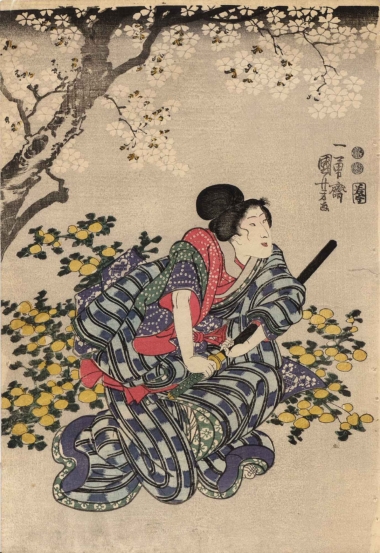



Utagawa KUNIYOSHI (around 1797 / 98–1861) pupil of Utagawa Toyokuni (1769–1825), worked from 1814 to 1860 and, along with Utagawa Kunisada (1786–1864 / 65) and Utagawa Hiroshige (1797–1858), is one of the most famous warriors and hero actors ( musha‑e ) its time. In his hero pictures, his theater pictures ( kabuki Scenes), his depictions of beautiful women ( bijin-ga) and pictures of western landscapes, he introduced new European styles. From 1830 onwards, Kuniyoshi published caricatures, illustrations of heroic episodes in Japanese history, devoted himself to mythological themes and produced outstanding depictions of ghosts. Kuniyoshi is considered a master of the uncanny and the drama.
Utagawa KUNIYOSHI (around 1797 / 98–1861) pupil of Utagawa Toyokuni (1769–1825), worked from 1814 to 1860 and, along with Utagawa Kunisada (1786–1864 / 65) and Utagawa Hiroshige (1797–1858), is one of the most famous warriors and hero actors ( musha‑e ) its time. In his hero pictures, his theater pictures ( kabuki Scenes), his depictions of beautiful women ( bijin-ga) and pictures of western landscapes, he introduced new European styles. From 1830 onwards, Kuniyoshi published caricatures, illustrations of heroic episodes in Japanese history, devoted himself to mythological themes and produced outstanding depictions of ghosts. Kuniyoshi is considered a master of the uncanny and the drama.






Recent Comments